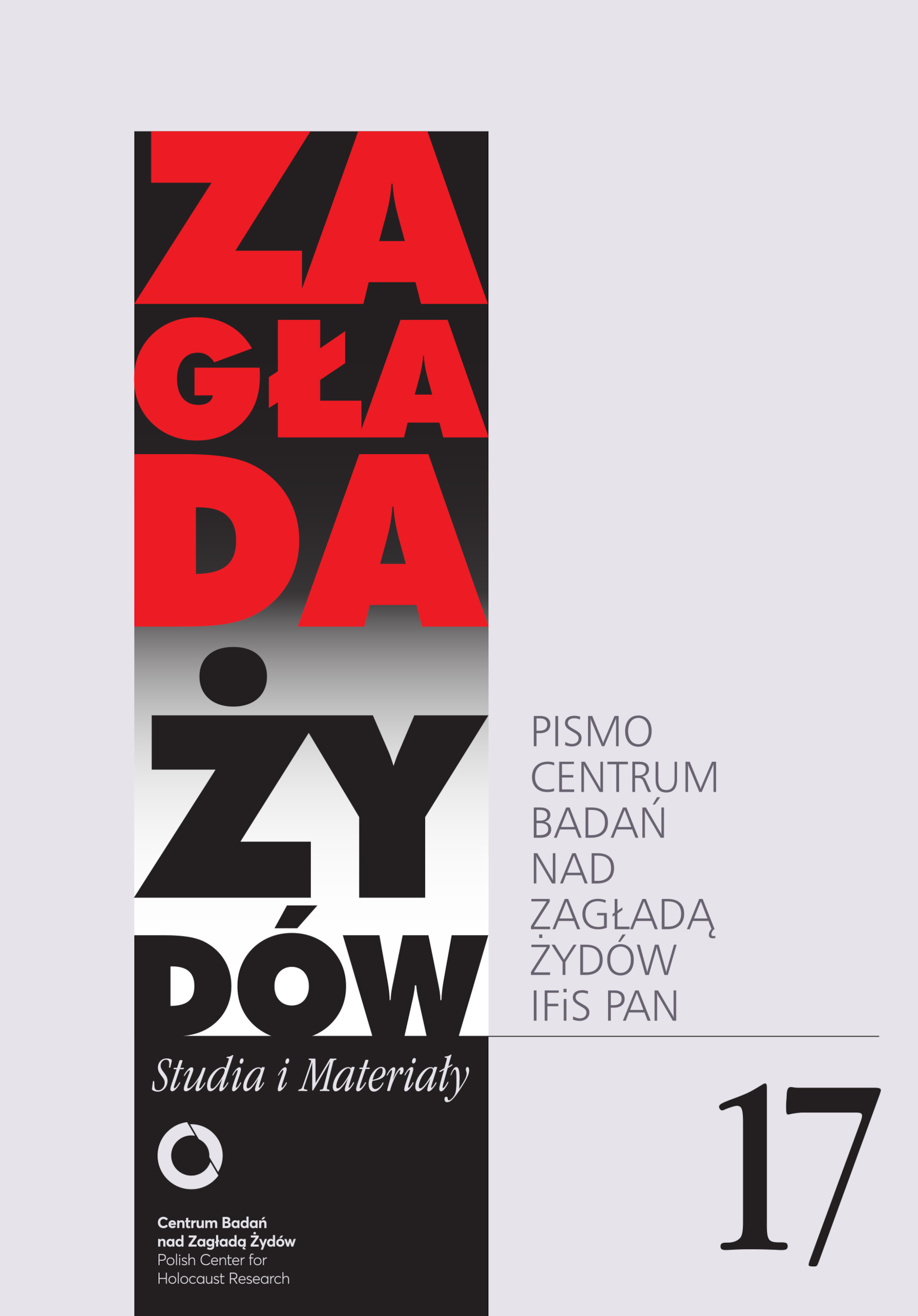A Violin in Auschwitz
Zagłada Żydów. Studia i Materiały, No. 17 (2021), Pages: 629-630
Submission Date: 2021-12-19Publication Date: 2021-12-20
 https://doi.org/10.32927/zzsim.899
https://doi.org/10.32927/zzsim.899
Abstract
In the music notation, a pause indicates the duration of the silence. Sometimes this silence is precisely dictated by the pace of the piece and the number of notes in the bar, in other cases it depends more on the inner sense of time of the player. It also happens that the composer writes down silence at the end of the piece, not trusting - perhaps rightly - the performer that he will be able to sense and understand it himself. Sometimes even the whole piece, as in the case of John Cage's famous 4'33, is actually written four and a half minutes of silence. Silence can be of great importance, it can be saturated with meanings or it can be completely empty.
Why am I writing about this?
...
Keywords
music in Auschwitz-Birkenau Museum
License
Copyright (c) 2021 Author&"Holocaust Studies and Materials"

This work is licensed under a Creative Commons Attribution 4.0 International License.
https://creativecommons.org/licenses/by/4.0
The journal is published under the Diamond Open Access Standard, CC-BY-4.0 Deed - Attribution 4.0 International - Creative Commons
Most read articles by the same author(s)
- Maria Sławek, Music as a form of commemoration of the Warsaw Ghetto Uprising , Zagłada Żydów. Studia i Materiały: No. 19 (2023)
Similar Articles
- Justyna Kowalska-Leder, Fetishization of Authenticity – The Casus of the Museum and Memorial Site , Zagłada Żydów. Studia i Materiały: No. 17 (2021)
- Piotr Trojański, “We need to send him one, because he is a ‘goldsmith’ or ‘Canada man’.” Case of an Oświęcim Camp Security guard , Zagłada Żydów. Studia i Materiały: No. 11 (2015)
- Małgorzata Preuss, Architects of the Holocaust – an Analysis of Operations of KL Auschwitz-Birkenau Central Construction Board , Zagłada Żydów. Studia i Materiały: No. 2 (2006)
- Marta Zawodna, On the Clearing of the Post-Camp World. Ways of Handling the Human Remains at the Former KL Auschwitz-Birkenau Camp from the Final Evacuation to the , Zagłada Żydów. Studia i Materiały: No. 8 (2012)
- Zofia Wóycicka, Holocaust Laboratory – New Historical Exhibition at the Former Kulmhof Death Center in Chełmno nad Nerem , Zagłada Żydów. Studia i Materiały: No. 16 (2020)
- Monika Adamczyk-Garbowska, Three Visits to Auschwitz , Zagłada Żydów. Studia i Materiały: No. 14 (2018)
- Michal Frankl, Finally in the Calendar? The Theresienstadt Family Camp at Auschwitz-Birkenau in the Czech Historical Memory , Zagłada Żydów. Studia i Materiały: No. 13 (2017)
- Agnieszka Haska, Auschwitz from Auschwitz or how to write a bestseller , Zagłada Żydów. Studia i Materiały: No. 16 (2020)
- Katarzyna Odrzywołek, Piotr Trojański, Tehran Children – from Siberian Frost to Palestinian Sun. The role of Polish Embassy’s diplomatic posts in the USSR and Anders’s Army in rescuing Jewish children , Zagłada Żydów. Studia i Materiały: No. 11 (2015)
- Ewa Cuber-Strutyńska, Witold Pilecki. Confronting the legend of the “volunteer to Auschwitz” , Zagłada Żydów. Studia i Materiały: No. Holocaust Studies and Materials (2017)
1 2 3 4 5 6 7 8 9 10 11 12 13 14 15 16 17 18 19 20 21 22 23 24 25 > >>
You may also start an advanced similarity search for this article.
 English
English
 Język Polski
Język Polski



 https://orcid.org/0000-0002-4228-1969
https://orcid.org/0000-0002-4228-1969

